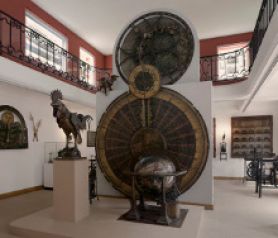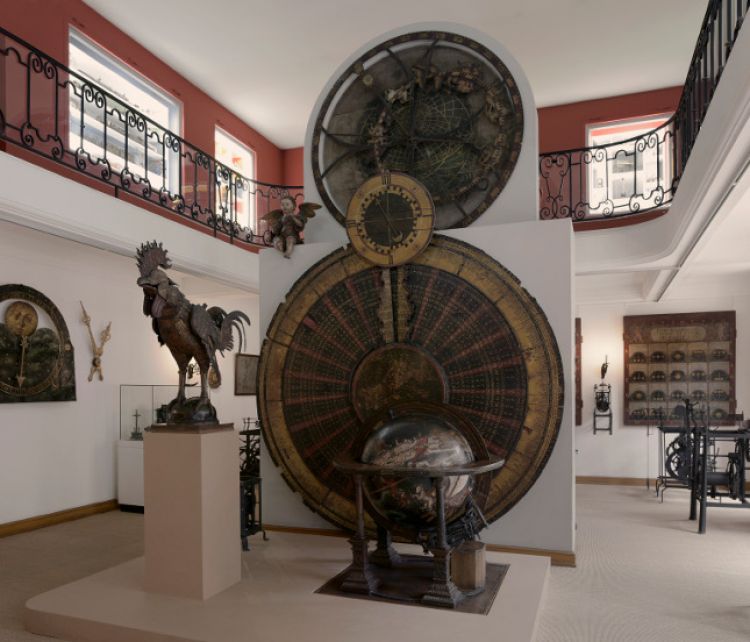Second astronomical clock of Strasbourg Cathedral

Strasbourg Cathedral has successively housed three astronomical clocks. The mechanical rooster kept in the Museum comes from the first of these, known as the "Three Kings" Clock and made between 1352 and 1354. This was replaced by a second clock in 1571. Due to the complexity of the astronomical mechanism, the precision of the calculations and the quality of its paintings, it met with a resounding success. The mathematician Conrad Dasypodus, the painter Tobias Stimmer and the two watchmaking brothers Isaac and Josias Habrecht were its designers and creators. Several remarkable parts of this clock are displayed in the Museum Clock Room. The Celestial Globe, the Civil and Ecclesiastical Calendar, the Minute Dial and the Astrolabe, representing celestial phenomena seen from Earth, have been preserved. Statuettes personifying the ages of life paraded successively before Christ the Redeemer, victorious over death, to mark the hours. Other emblematic parts of this mechanical masterpiece are the dial of the phases of the moon and the painted tables announcing the dates and characteristics of the solar and lunar eclipses.
The mechanisms of the second astronomical clock had ceased to function by 1838 and were replaced by Jean-Baptiste Schwilgué in 1840. His reconstructed clock is still in use in the Cathedral today.
